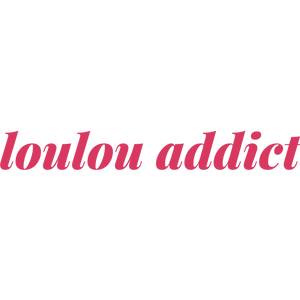Pink October. Cancer, prevention, and screening

October means Pink October! This month of action and prevention seemed like the perfect time to talk with you about the broad topic of women’s cancers, gynecological cancers, and prevention.
Too many women fall victim to cancer today when it could be avoided. Early detection dramatically improves the chances of recovery. It’s important to break the silence, raise awareness, and take an interest in the various actions led by organizations.
With our menstrual products, whether it's a menstrual cup or period underwear, Louloucup is here for all women—from puberty to menopause. With our durable, washable hygiene products, we care for your intimate health and overall well-being. That’s why, during Breast Cancer Awareness Month, we want to highlight the importance of prevention. Some actions, words, or questions may seem trivial, but they can save your life!
In this article
🌺 The Pink October movement and the importance of prevention
What is Pink October?
You’ve probably noticed: pink umbrellas and banners decorate public spaces in your city. Pink October is a time of action each year, coordinated with the French Cancer League to raise public awareness about breast cancer.
A cancer that still claims the lives of too many women today. Breast cancer is the deadliest cancer among women in France. The Pink October campaign promotes breast cancer screening, a cancer that, in many cases, can be cured if detected early (in 90% of cases).
Events, meet-ups, forums, walks, runs—many different activities are organized throughout October to spark curiosity and interest. Healthcare professionals are invited to participate and inform the public.
It’s important for people to have access to information in a simple, direct, and relaxed way. We’re not talking about hospitals, appointments with unfamiliar practitioners, or strict, intimidating settings.
Some events require a small financial contribution (for example, to organize a run). All funds are then donated. Donations help patients in their daily lives (help covering the cost of a breast prosthesis, a care session) or to fund research. So don’t hesitate—go to your city and take part in one of the many gatherings, workshops, or events being organized.
Prevention
Talk about it again and again, inform, ask questions, don’t be afraid to make waves. Don’t forget that cancer kills. Speaking up can save your life! Dare to ask questions at your next doctor’s visit. Don’t hesitate to reach out to support groups.
It’s so important to get screened when you know that one in eight women in France will face breast cancer at some point in their lives. Each year in France, 58,500 women are diagnosed with breast cancer. Yet, only one in two women get screened.

What does screening involve?
Starting at age 25, it's important to have a simple check-up with a healthcare professional every year. This clinical exam is just a quick breast palpation. The palpation is extremely fast (just a few seconds) and not painful. After menopause, it's recommended to get a mammogram every two years. All these exams are fully covered by social security.
And what about self-exams?
Even though it’s no substitute for the expertise of a healthcare professional (doctor, midwife, or gynecologist), self breast exams are a good preventive measure. They’re very simple to do and involve inspecting and examining your own breasts. You can do this regularly. How do you do it?
- Examine your breasts after your period.
- First, visually inspect them to spot any differences, asymmetry, swelling, or any other unusual signs.
- Check to make sure there isn’t any leakage at the nipples.
- To palpate correctly, raise the arm on the side you’re checking and use the opposite hand.
- With your fingertips, carefully examine the breast from the nipple outward, all the way to the armpit.
Please remember that self-examination is never a substitute for seeing a doctor! We also do not recommend self-diagnosis. However, self-examination can be a sign to consult a doctor if you feel a lump or unusual discomfort under your fingers. This can help rule out cancer risk. It’s a preventive action and habit that can save lives.

🌺 Breast cancer and all the others…
In October, we talk a lot about breast cancer. But let’s not forget the other cancers women are at risk for. There are many gynecological cancers: cervical cancer, endometrial cancer, ovarian cancer, vulvar cancer, vaginal cancer, and even fallopian tube cancer.
Treatments vary and also depend on the stage of the cancer. Some warning signs to look out for: pelvic pain, abdominal pain, and very heavy periods. Some cancers are sneakier and show no symptoms at all. That’s why it’s so important to see your doctor regularly, keep up with your Pap smears, and schedule screenings.
Glossary of Terms Related to Gynecological Cancers
- Uterine sarcoma is a type of uterine cancer. Tumors develop in the uterus and endometrium. This cancer is rare (1 to 3% of uterine cancers).
- Peritoneal carcinoma, or cancer of the peritoneum, is often a consequence of ovarian cancer, colon cancer, or breast cancer.
- The HPV types 16 and 18 are responsible for cervical cancer. Persistent lesions caused by infection can develop into cancer. There is a vaccine, but screening Pap smears are still essential.
- Uterine cancer is a cancer of the endometrium. A uterine fibroid is a benign tumor, also called a myoma or fibromyoma, that forms in the uterus. 1 in 3 women will experience a uterine fibroid in her lifetime.
- A uterine polyp, or uterine polyp growth, is a mass that develops inside the uterus, on its lining, the endometrium. Benign in the vast majority of cases, polyps can be single or multiple and come in various sizes.
Not sure? Family history? Pain? Never hesitate to see your doctor. Don’t skip your annual checkup with your gynecologist or midwife. Regular Pap smears are important—they’re an effective, quick, and painless screening method.
 Don’t forget to pin this article 😉
Don’t forget to pin this article 😉


































